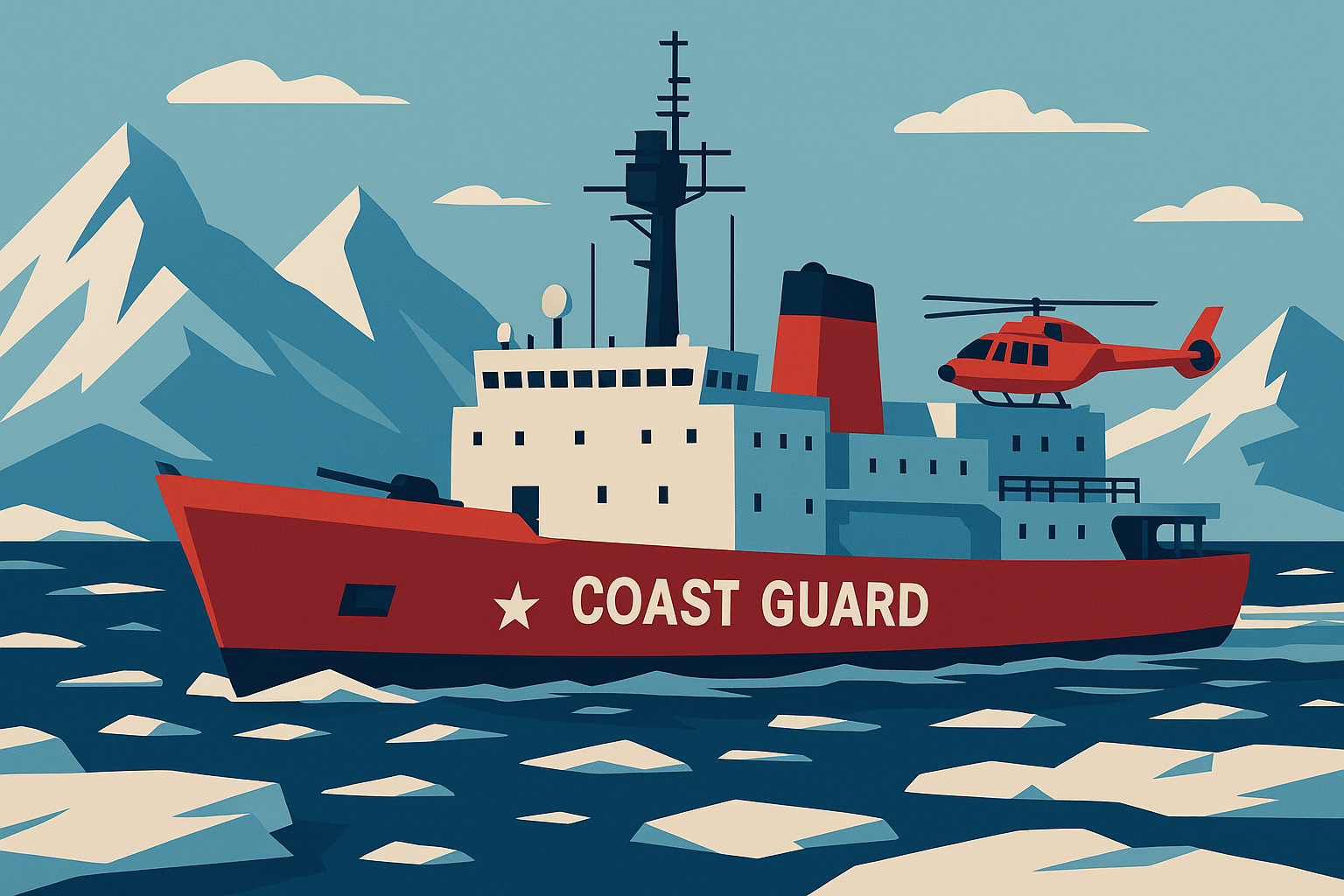As climate change reshapes the Arctic, melting ice and opening once-inaccessible sea routes, the United States is significantly expanding its polar maritime capabilities. A key provision in President Donald Trump’s newly signed federal spending package—dubbed the “Big Beautiful Bill”—authorizes a historic investment in the U.S. Coast Guard’s icebreaker fleet, aimed at countering growing Chinese and Russian influence in polar regions.
A Major Boost to Coast Guard Capabilities
The bill includes funding for:
- 17 new icebreakers
- 21 cutters
- Over 40 helicopters
- Six large patrol aircraft
Coast Guard officials say this marks the largest investment in polar capabilities in U.S. history. However, some of the vessels could take as long as 15 years to be built and commissioned.
“This historic investment marks a new era for the Coast Guard,” said Admiral Kevin Lunday, Acting Commandant of the U.S. Coast Guard.
Why the Arctic Matters
The investment comes at a pivotal time. Shrinking sea ice is opening the Northwest Passage—a sea route connecting the Atlantic and Pacific Oceans via the Bering Sea—which offers a 40% shorter path between Asia and Europe compared to traditional routes like the Panama and Suez canals.
The Arctic is increasingly seen as a strategic frontier, rich in oil, natural gas, and rare earth minerals vital for electronics and defense technologies. Trump has vowed to increase U.S. oversight in areas like northern Canada and Greenland, regions he views as vulnerable to growing Chinese and Russian collaboration.
Federal officials warn that without a stronger maritime presence, the U.S. risks ceding economic and strategic ground to rivals in a rapidly transforming region.
Current Gaps in U.S. Arctic Readiness
The U.S. Coast Guard currently operates just two aging icebreakers:
- USCGC Polar Star – A heavy-duty icebreaker now nearly 50 years old, well past its intended service life.
- USCGC Healy – A 27-year-old medium-duty vessel that has suffered multiple fires and mechanical failures. Its most recent breakdown forced the cancellation of Arctic patrols in 2024.
According to a 2024 report from the U.S. Government Accountability Office (GAO), the Coast Guard is already facing significant delays and cost overruns on three previously authorized icebreakers, with delivery not expected until the mid-2030s. The newly approved ships under Trump’s bill may not be operational until the 2040s.
Concerns from Indigenous Communities and Experts
Alaska Native communities living along the Bering Sea have voiced concern over the environmental risks associated with increased shipping and resource extraction—especially in the absence of robust Coast Guard oversight.
The Arctic Institute, a nonpartisan Washington-based think tank, has long warned that the U.S. lags far behind other Arctic nations in icebreaker construction. The institute likens America’s current preparedness to “playing baseball without bats,” urging immediate investment in polar operations.
Interim Solutions and Shipbuilding Challenges
While the U.S. builds up its domestic shipbuilding capabilities, the Coast Guard has taken short-term measures. In 2024, it purchased a used oil exploration vessel, which is being retrofitted and will soon be deployed in Juneau, Alaska.
Still, expanding shipyard capacity and avoiding further construction delays will be critical. The White House has said it views the icebreaker initiative as part of a broader national effort to rebuild American manufacturing, particularly in the maritime sector.
Looking Ahead
As polar regions become more accessible, global competition over the Arctic is expected to intensify. With the “Big Beautiful Bill,” the Trump administration is seeking to ensure the United States can project power, ensure environmental protection, and secure strategic interests across both the Arctic and Antarctic frontiers well into the 21st century.



